AKAP 14 Polyclonal Antibody
- Catalog No.:YT0162
- Applications:WB;IHC;IF;ELISA
- Reactivity:Human;Rat
- Target:
- AKAP 14
- Gene Name:
- AKAP14
- Protein Name:
- A-kinase anchor protein 14
- Human Gene Id:
- 158798
- Human Swiss Prot No:
- Q86UN6
- Immunogen:
- The antiserum was produced against synthesized peptide derived from human AKAP14. AA range:1-50
- Specificity:
- AKAP 14 Polyclonal Antibody detects endogenous levels of AKAP 14 protein.
- Formulation:
- Liquid in PBS containing 50% glycerol, 0.5% BSA and 0.02% sodium azide.
- Source:
- Polyclonal, Rabbit,IgG
- Dilution:
- WB 1:500 - 1:2000. IHC 1:100 - 1:300. IF 1:200 - 1:1000. ELISA: 1:5000. Not yet tested in other applications.
- Purification:
- The antibody was affinity-purified from rabbit antiserum by affinity-chromatography using epitope-specific immunogen.
- Concentration:
- 1 mg/ml
- Storage Stability:
- -15°C to -25°C/1 year(Do not lower than -25°C)
- Other Name:
- AKAP14;AKAP28;A-kinase anchor protein 14;AKAP-14;A-kinase anchor protein 28 kDa;AKAP 28;Protein kinase A-anchoring protein 14;PRKA14
- Observed Band(KD):
- 23kD
- Background:
- The A-kinase anchor proteins (AKAPs) are a group of structurally diverse proteins, which have the common function of binding to the regulatory subunit of protein kinase A (PKA) and confining the holoenzyme to discrete locations within the cell. This gene encodes a member of the AKAP family. The protein anchors PKA in ciliary axonemes and, in this way, may play a role in regulating ciliary beat frequency. Alternate transcriptional splice variants, encoding different isoforms, have been characterized. [provided by RefSeq, Jul 2008],
- Function:
- caution:The sequence shown here is derived from an Ensembl automatic analysis pipeline and should be considered as preliminary data.,function:Binds to type II regulatory subunits of protein kinase A and anchors/targets them.,subunit:Binds to type II regulatory subunits (RII).,tissue specificity:Present in cilia (at protein level). Expressed in tissues containing axoneme-based organelles (cilia and/or flagella): trachea and testis. Highly expressed in airway cilia.,
- Subcellular Location:
- Cytoplasm .
- Expression:
- Present in cilia (at protein level). Expressed in tissues containing axoneme-based organelles (cilia and/or flagella): trachea and testis. Highly expressed in airway cilia.
- June 19-2018
- WESTERN IMMUNOBLOTTING PROTOCOL
- June 19-2018
- IMMUNOHISTOCHEMISTRY-PARAFFIN PROTOCOL
- June 19-2018
- IMMUNOFLUORESCENCE PROTOCOL
- September 08-2020
- FLOW-CYTOMEYRT-PROTOCOL
- May 20-2022
- Cell-Based ELISA│解您多样本WB检测之困扰
- July 13-2018
- CELL-BASED-ELISA-PROTOCOL-FOR-ACETYL-PROTEIN
- July 13-2018
- CELL-BASED-ELISA-PROTOCOL-FOR-PHOSPHO-PROTEIN
- July 13-2018
- Antibody-FAQs
- Products Images
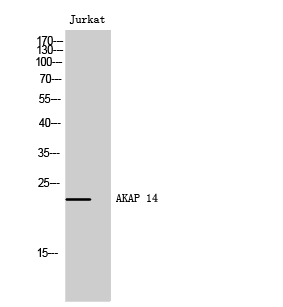
- Western Blot analysis of Jurkat cells using AKAP 14 Polyclonal Antibody
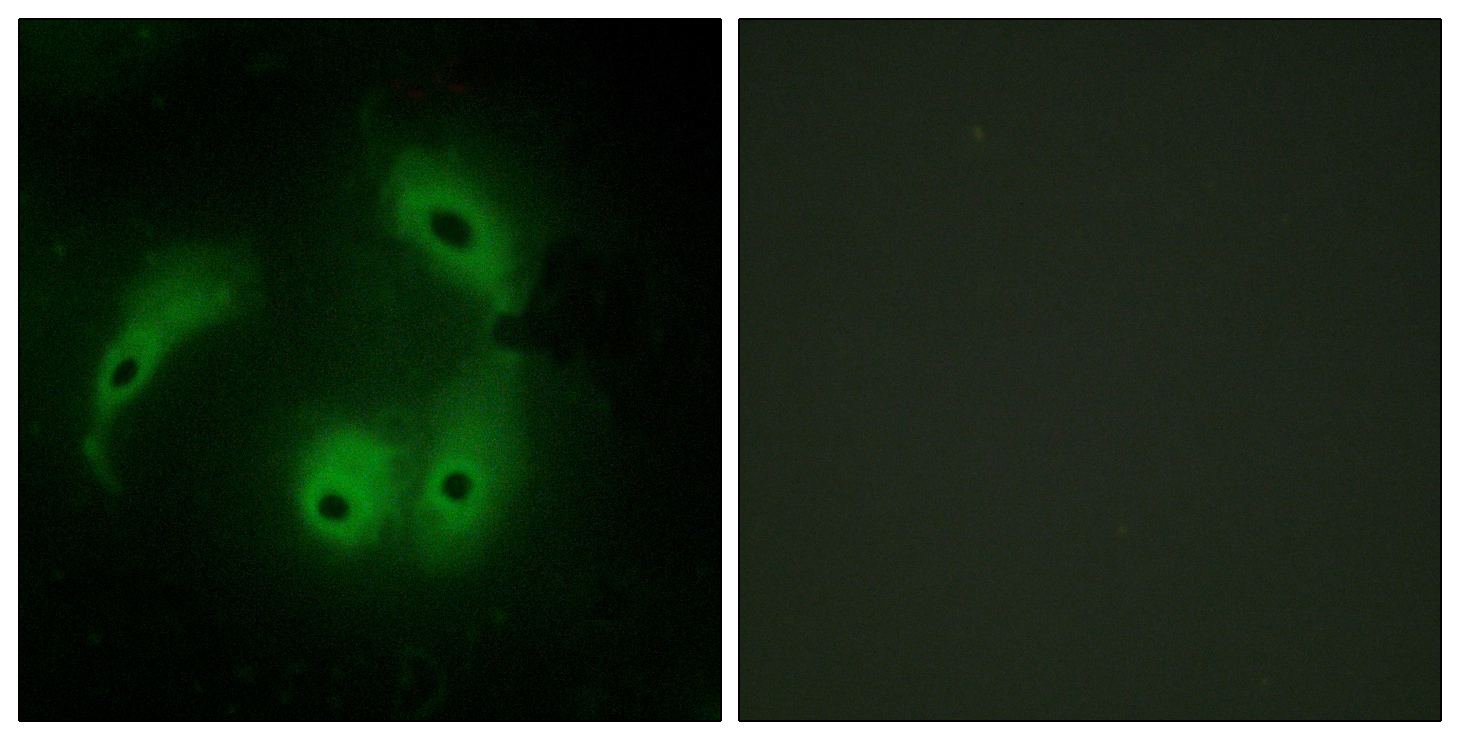
- Immunofluorescence analysis of HeLa cells, using AKAP14 Antibody. The picture on the right is blocked with the synthesized peptide.
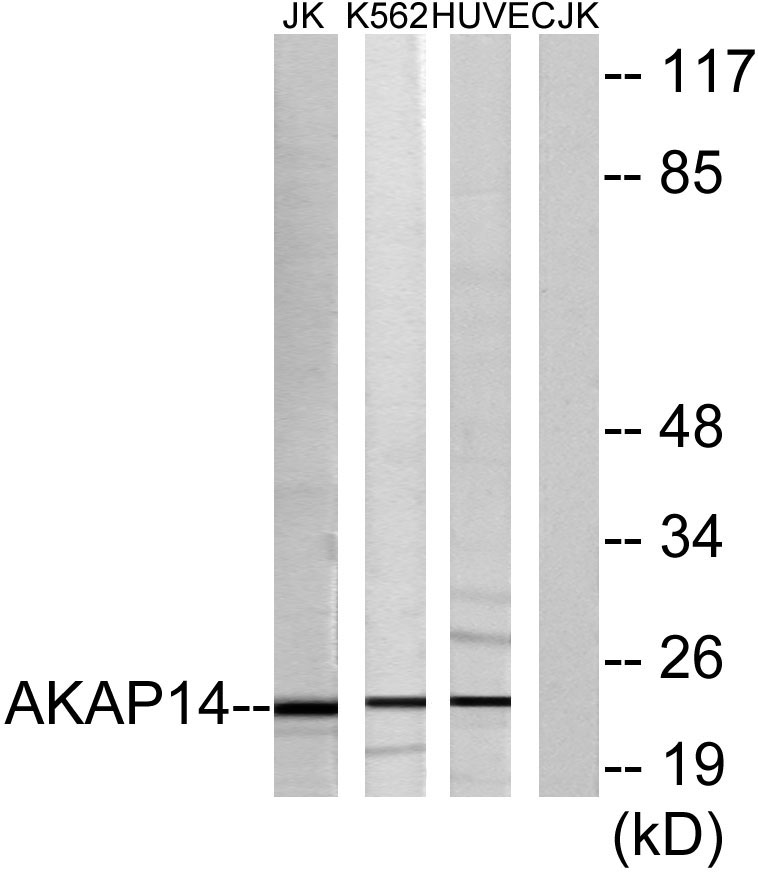
- Western blot analysis of lysates from Jurkat, K562, and HUVEC cells, using AKAP14 Antibody. The lane on the right is blocked with the synthesized peptide.
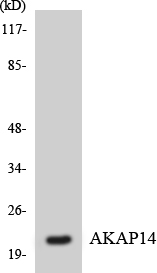
- Western blot analysis of the lysates from RAW264.7cells using AKAP14 antibody.
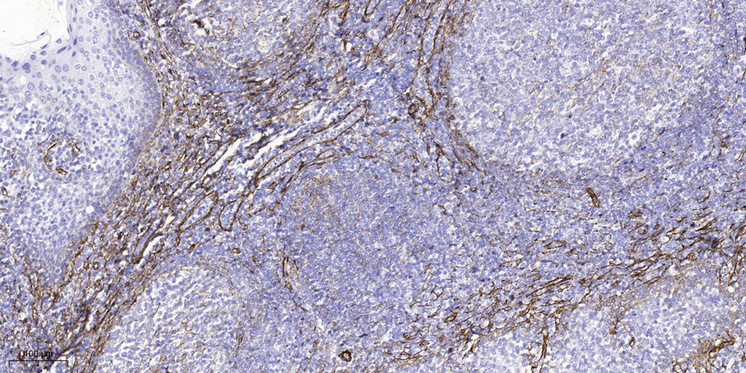
- Immunohistochemical analysis of paraffin-embedded human tonsil. 1, Tris-EDTA,pH9.0 was used for antigen retrieval. 2 Antibody was diluted at 1:200(4° overnight.3,Secondary antibody was diluted at 1:200(room temperature, 45min).



